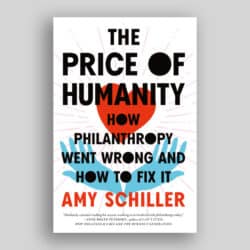Edited by V. Hogkinson and R. Sumariwalla Published by Independent Sector/United Way Institute, New York, 1985, pp. 547
REVIEWED BY JOHN GREGORY
Member, The Ontario Bar
The United States has, since its foundation, been a nation of volunteers, and it remains so today. Millions of Americans devote their time and effort to philanthropic activities and millions more give money to the same causes. Individuals have been joined, if not surpassed, in their donations by foundations and corporations, motivated by philanthropic impulses but spurred on by the tax system.
The extent and variety of this activity have made it crucial to the quality oflife in the United States and, as such, public policy must take it into account. President Reagan has purported to do so by calling for private sector philanthropy to take over many of the functions that his government is abandoning in social service, the arts and education. Those involved in charitable activities must also try to understand them as well as possible, to ensure the greatest efficiency in their efforts, whether they are directed to operations, fund raising or giving.
In practice, understanding philanthropy turns out to be an enormously complex task. Little information exists, and even less is reliable. Some areas, such as the techniques of fund raising, have been better plumbed than others, but the constant evolution of the field and the size of the charity sector constitute formidable barriers to precise comprehension.
Fortunately, those most concerned do not despair. University programs are established,* co-ordinating bodies like Independent Sector and the Canadian Centre for Philanthropy appear, and existing organizations become more sophisticated. One result of these processes was the 1985 Spring Research Forum sponsored by the United Way Institute and Independent Sector in the United States. In preparation for this forum, the sponsors published this collection of research papers under several rubrics of study. These monographs, many of which are reports in progress, covered such topics as the history of philanthropy, religion and philanthropy, individual giving and volunteering, corporate philanthropy, fund raising. and public policy and its impact on giving and volunteering.
*Seep.14. The tone and content of the essays vary greatly. A few sum up research with tentative conclusions about their topics, whether historical (“Doing Well by Doing Good: Business Philanthropy and Social Investment 1860-1984” by Peter D. Hall) or in tax policy (Clotfelder, “Tax Reform Proposals and Charitable Giving in 1985”). Others outline the limiting assumptions that permit some kind of organized research to be started and the early building blocks that they have laid on those foundations. In that regard I would note “Introducing Options into Corporate Charitable Payroll Deduction Programs”, by Deborah Kaplan Polivy, or Paton’s “Predisposition and Persuasion in Fundraising: Conceptual Distinctions and Policy Implications”. One or two are couched in such impenetrable sociological jargon, or just plain bad English, it is a struggle to find the nugget of useful research that they conceal.
Among the most interesting papers are discussions by Estelle Jones of the effect of public subsidies on the private non-profit sector, a multi-national study, though few conclusions are drawn, and two pieces on the impact of current taxreform proposals on charitable giving. Both agree that a flat tax rate would drastically reduce donations, though this depends of course on the level of deductions that would still be allowed. While the comments on the United States tax system are not directly relevant to Canada, the studies do remind us of the importance of the tax benefit in determining individual and corporate giving. The paper on the role of predispositions and persuasion in motivating individual giving addresses related concerns, though there may be few surprises in its conclusions.
The volume contains very few general discussions of the theory of philanthropy, or of giving or of fund raising. It may be that the broader questions have been sufficiently worked over by others and, therefore, before something new can be added, the statistical base or the empirical knowledge must be strengthened. The collection is subtitled, after all, The Frontiers of Knowledge.
Application or adaptation of the assumptions and possibly the statistical formulae described in these pieces will perhaps prompt original research in Canada as well. Some valuable work, drawing on material from this collection, has already been done by Professor Jacke Wolf of the University of Manitoba. (See The Philanthropist
, Volume V, Number 3, Fall/Winter 1985, “A Comparison of the Role of the Voluntary Sector in Canada and the United States”.)
Perhaps the strongest message of the collection as a whole is just how hard it is to know anything for certain about philanthropy. Often the assumptions made by the researchers are eminently debatable, a fact that researchers themselves frequently admit. The statistical surveys are so often incomplete that conclusions drawn from them may be farfetched or perilously tentative. Yet I would not dare to conclude that the enterprise does not justify the effort. On the contrary, the early publication of just this sort of collection can be highly useful in defining and refining the questions, in order to improve the answers.
The rational basis of philanthropic policy in all sectors depends on it.
Tax Guide for Charities, By Donald R. Huggett, F.C.A. and J. David Schijns, C.A. Published by Coopers & Lybrand, Apri/1985, 20 pp.
REVIEWED BY EDWARD J. WAITZER
Member, The Ontario Bar
For better (or in this reviewer’s opinion) worse, the primary regulatory lens through which our federal government has chosen to view philanthropy has been the income tax system. Since, at best, this has provided a complex and cumbersome framework, the tax treatment of charities has, for some time, been distinguished for its lack of certainty and coherence. This has been particularly true during the last decade, as a series of regulatory reform initiatives have wound their way down a tortuous path of discussion papers, draft legislation, submissions and so on. Things only settled down somewhat with the enactment of new regulatory provisions on December 20, 1984, a year after the proposed changes had been announced by the then Minister of Finance.
The Canadian Centre for Philanthropy (in co-operation with the Federation of Junior Leagues of Canada and the Canadian Bar Association) took a leadership role in the policy development process by organizing a series of cross-country seminars in response to a (in my opinion, somewhat misguided) May 1983
Department of Finance discussion paper. The informed views of about 1,000 participants from the field enabled the Centre to make a number of persuasive submissions to the then Minister which were reflected in the ultimate legislation.
Now that much of the dust has settled, Coopers & Lybrand (Canada) deserve credit for assembling, in a 20-page booklet, a clear and concise outline of the current rules governing the tax treatment of charities. As the authors note in the preface, their aim is to provide a terse summary of the principles as they exist at present, rather than a history of the changes, the reasons therefor, or the issues which remain the subject of controversy. By defining their objective narrowly, they have been able to present a concise and readily understandable explanation of a relatively complex set of rules.
Rather than attempting to mix analysis with narrative summary, the authors have chosen simply to note some of the serious “grey areas” that remain in the regulatory framework. Most noteworthy is the definition of”charitable purposes” in respect of which there remains considerable policy debate on issues as diverse as political activities, religious schools and athletic organizations. Another issue which the authors note to be lacking precise regulatory guidance relates to the conduct by Canadian charities of activities outside Canada.
In an area as arcane as the calculation of disbursement requirements, this booklet will provide a useful overview, enabling any reader to understand theoperative principles, if not the detailed application of the rules themselves.
As a road map to the revised regulatory framework, the publication is an invaluable starting point and deserves a broad audience.
Complimentary copies of Tax Guide for Charities are available, on request, from any Canadian office of Coopers & Lybrand, Chartered Accountants.


